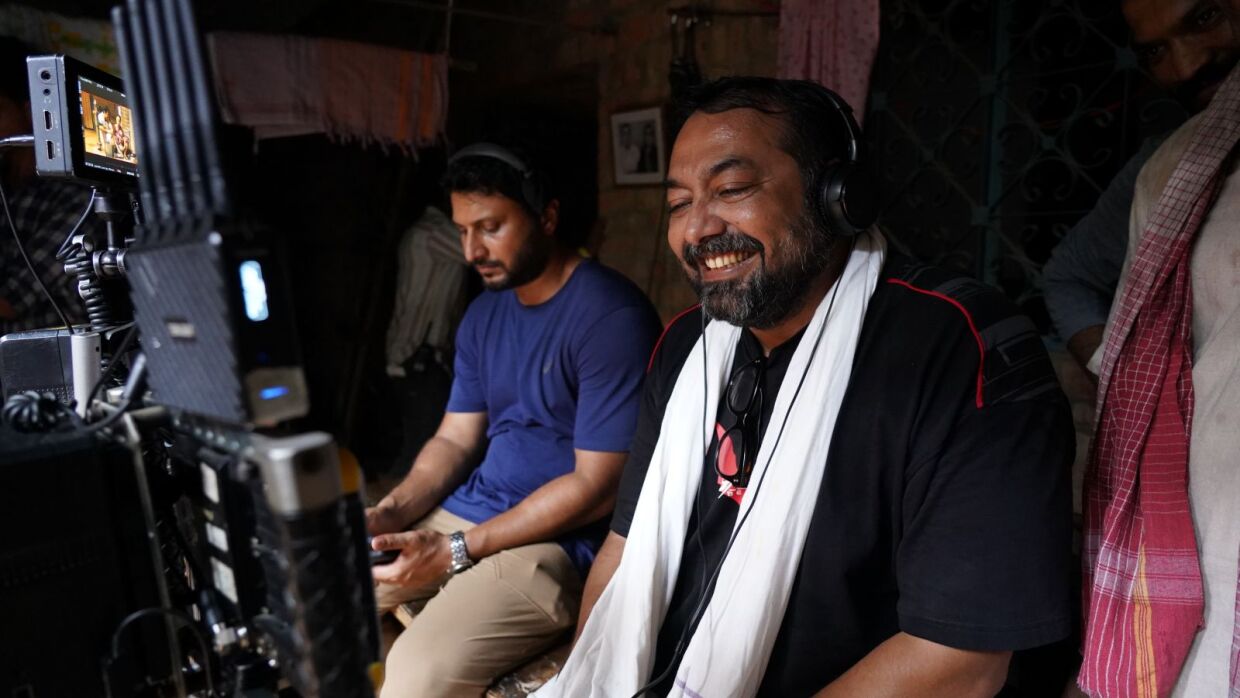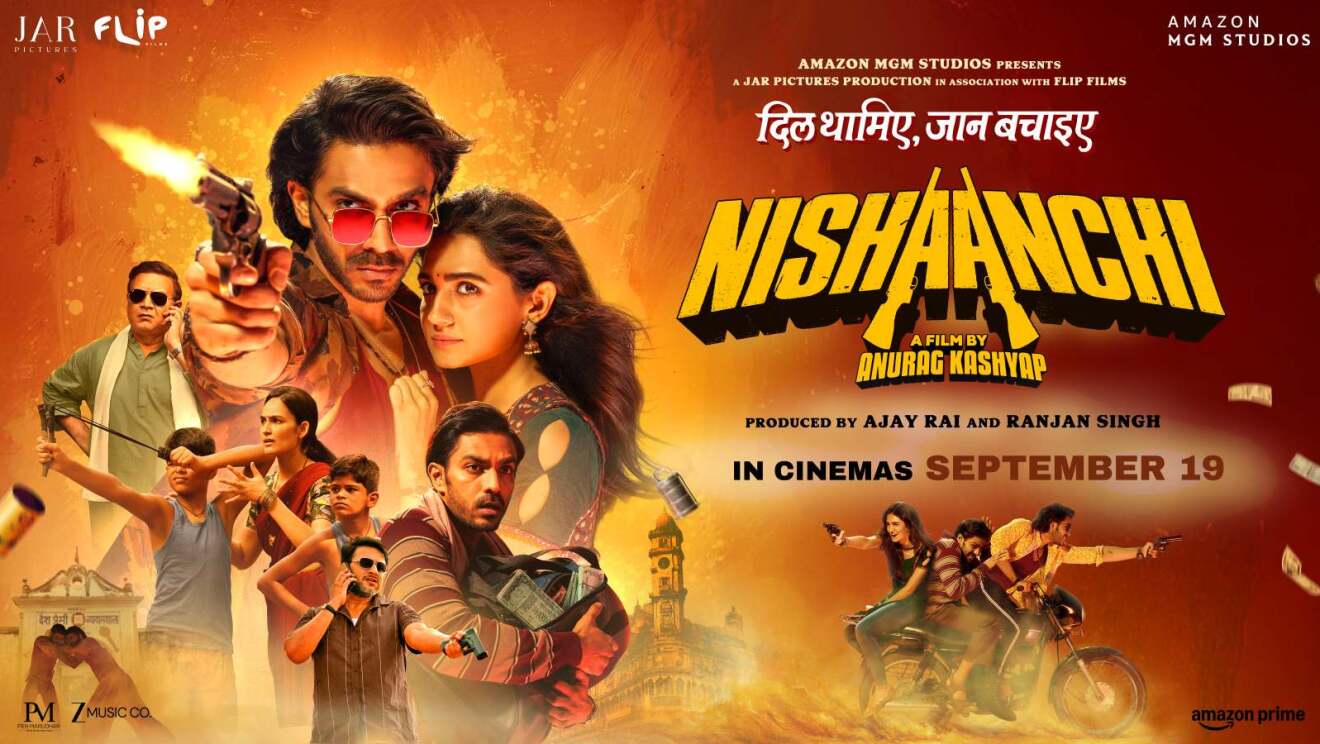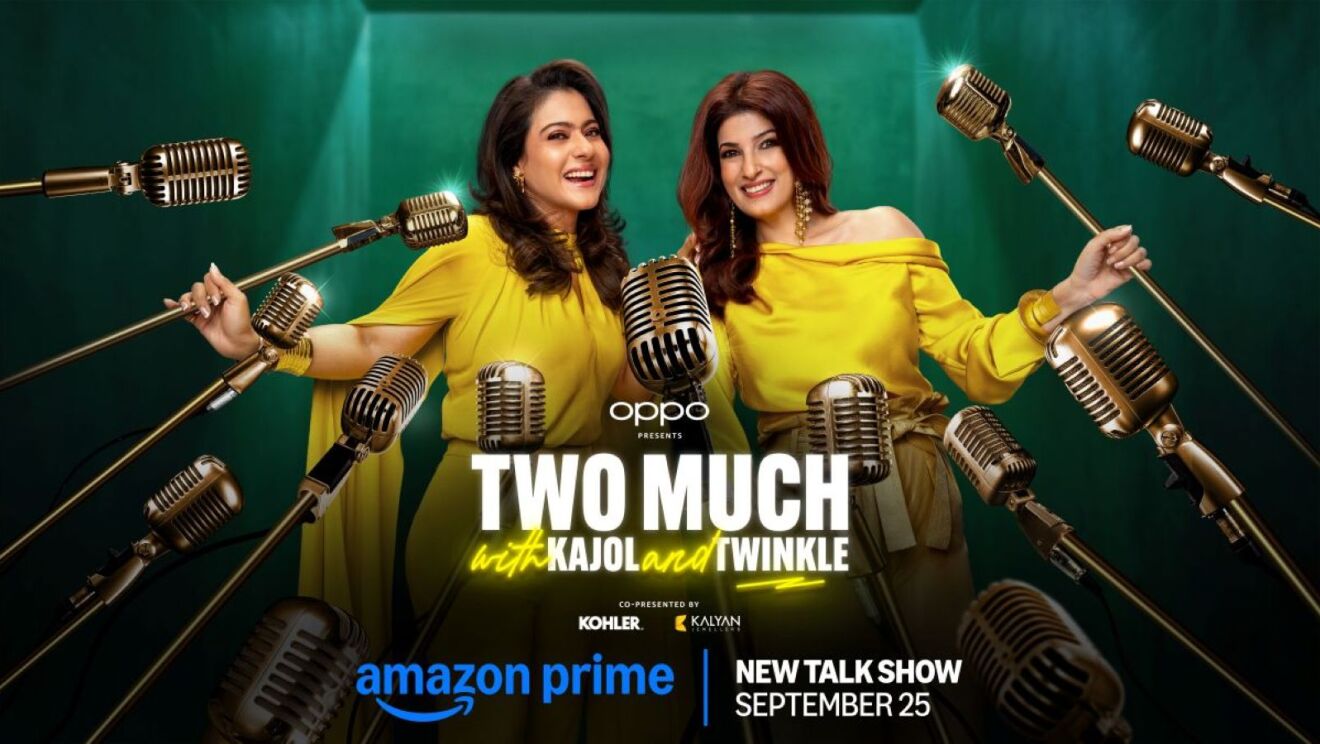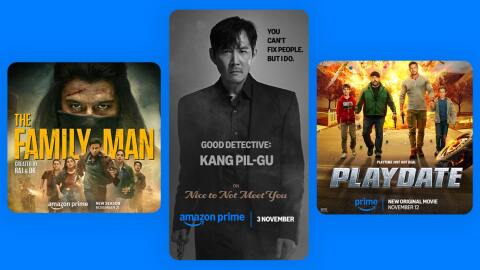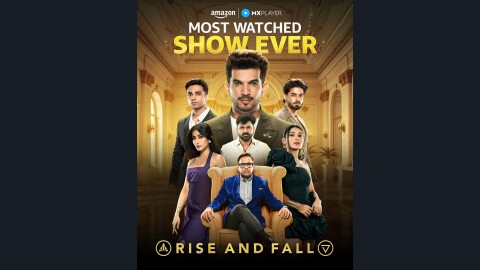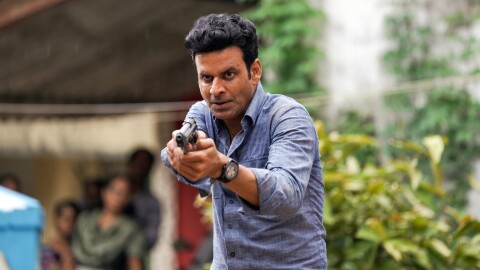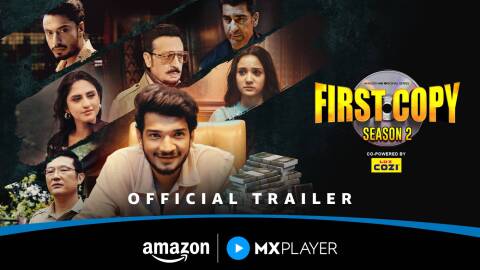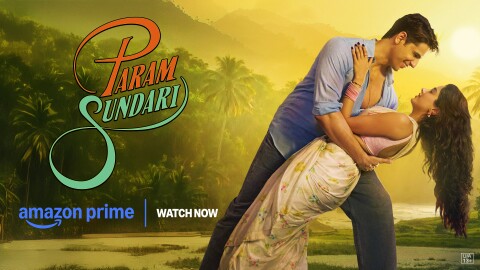Nearly a decade after first putting pen to paper, acclaimed director Anurag Kashyap is ready to unveil his most ambitious project to date. Nishaanchi, releasing in cinemas on 19 September through Amazon MGM Studios, marks a return to the filmmaker's raw storytelling roots while simultaneously paying homage to the classic Indian cinema that shaped his creative vision.
We spoke to Anurag Kashyap to learn everything—from the film's lengthy development journey to his deliberate choice of working with newcomers Aaishvary and Vedika, and why this story demanded his most extensive shoot ever.
Q. You’ve called Nishaanchi your most elaborate shoot to date. What makes this film different from your earlier works in terms of scale and vision?
Nishaanchi was born out of a very personal and instinctive space. I wrote the film back in 2016, right after Mukkabaaz. In many ways, it was a reaction to Mukkabaaz itself. That film came with its own pressures and there was an urgency to return to my older, more raw style of filmmaking, working with newer talent and staying closer to the ground. At the time, I found myself wondering: what if I consciously wrote a story that could be mounted on a bigger scale?
I already had a seed of an idea—a story about a mother and her twins that had been with me for a while. So, I began writing it, and within three to four days, the first draft of Nishaanchi was ready. From there, I started exploring ways to make it larger in scale and vision. Filmmaking is a race against time — every single day costs money. For me, saving days means saving resources, which I can then put into music, post-production, or enhancing the film itself. Typically, my films don’t take more than 30–33 days to shoot. But Nishaanchi has been my most ambitious project yet, stretching to 69 shooting days, the highest I’ve ever done.
Q. You described the film as being in a “full-on Salim–Javed zone.” Can you explain what that means in terms of tone and storytelling? Should audiences expect a throwback to the Bollywood of 1970s or a reinvention of that spirit?
When I say Nishaanchi is in a “full-on Salim–Javed zone,” I mean it’s rooted in the storytelling tradition that shaped the cinema I grew up with. For me, films like Sholay came first—long before I discovered Sergio Leone or Westerns. I experienced Sholay not just as a movie but as a story passed along through word of mouth, like so many stories in small towns. The larger-than-life characters and carefully crafted drama left a lasting imprint on me.
Salim–Javed’s scripts feature complex characters that have a mix of moral ambiguity and raw emotion, that make even large-than-life stories feel authentic. That’s what Nishaanchi channels—the tension, the moral dilemmas, the deeply human stories set against a larger canvas. It’s not about copying the 1970s; it’s about capturing that spirit of storytelling, the intensity and heart, and reimagining it for today’s audience.
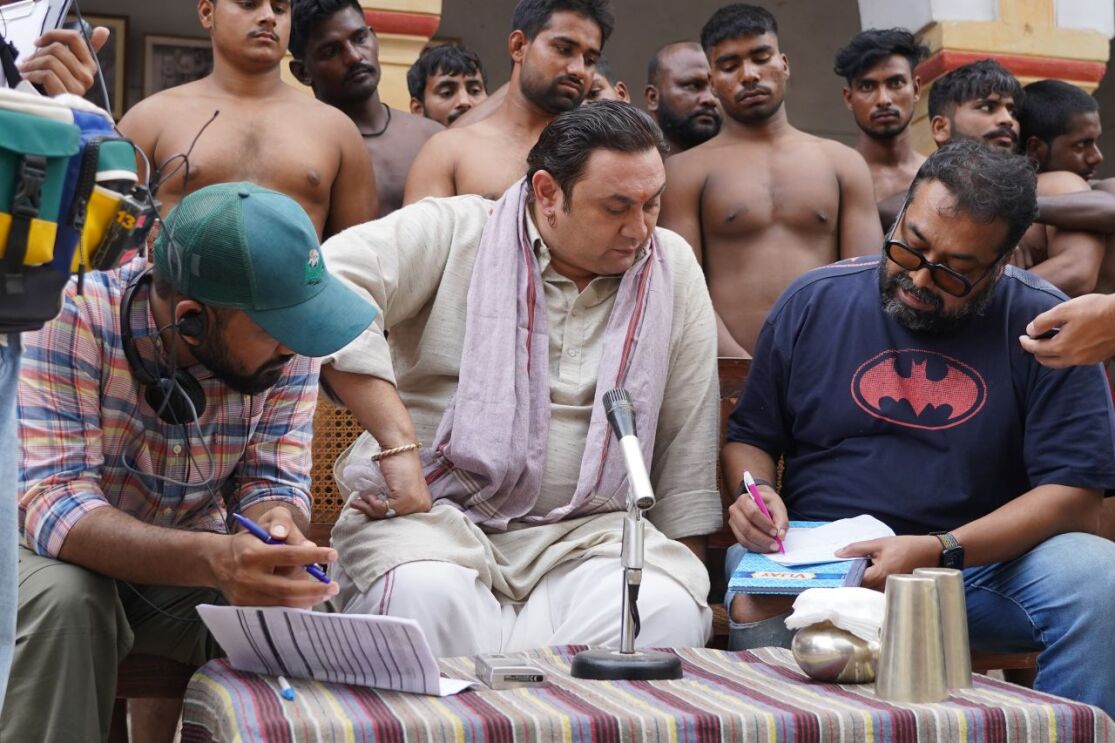
Q. Nishaanchi is being released under the Amazon MGM banner. How did this collaboration come about, and what made you choose to work with Amazon for this project?
The collaboration with Amazon MGM came about in a rather unexpected and serendipitous way, much like how Nishaanchi itself gained momentum. I was on a flight to Melbourne when I ran into one of the Amazon heads, who happened to be seated right next to me. During our conversation on the long flight, I handed them the script for Nishaanchi. Halfway through, it was clear they were completely engaged, and by the time we landed, I was told, ‘Let’s do this.’ That trust, confidence, and shared belief in the vision of the film made Amazon MGM the perfect partner for Nishaanchi. They embraced the story, the new actors, and the scale we envisioned, and made the collaboration feel effortless from the very start.
Q. You've worked with both established actors and newcomers. What guided your casting decisions for Nishaanchi?
For me, the biggest non-negotiable while casting is time. I need complete commitment. That’s one of the main reasons I often end up working with newer actors or those willing to give me their time. I simply can’t work with someone who isn’t willing to dedicate time for preparation. So with Nishaanchi, my absolute condition for both Aaishvary and Vedika was clear: they had to give their undivided time to the film. No distractions, no other projects—just full dedication. Because the process demands a high level of discipline and focus. And they honoured that completely.
What they bring to the table is an immense amount of hunger and devotion. That’s what I saw in both Aaishvary and Vedika. They surrendered to the process without questioning it and stayed with it through the long prep period, all the way until we eventually shot the film in 2024. That kind of commitment is rare and invaluable. Aaishvary, apart from being a committed actor, is also incredibly talented musically. He composed a key track for the film and contributed to several other musical moments in the film. No matter the time, day or night, he was available and present. Vedika matched that energy and was equally invested throughout. Their dedication made the entire shooting experience feel seamless and, honestly, a breeze.
Q. Do you feel that working with newcomers adds a certain rawness or unpredictability that you enjoy as a director?
I first wrote Nishaanchi in 2016, but it stayed with me until Aaishvary came along in 2020. The moment he read it, I knew he had connected to the material, but I also told him this wasn’t a role you could simply walk into, it demanded complete surrender.
Then in 2022, I met Vedika and everything fell into place. The two of them went off to Kanpur, spent months in workshops, picked up the dialect, soaked in the culture, and built a bond so natural that by the time I pitched the film, the world of Nishaanchi was already alive in them. For me, casting is never just about finding the right face, it’s about finding actors willing to give time, and that’s my one non-negotiable. With Aaishvary and Vedika, it meant no distractions, no other projects, only immersion. That hunger and surrender is what I look for, and it’s what made this process seamless.

Q. You’ve said the film connects to the kind of cinema you grew up watching in small towns. How did that nostalgia shape the visual language of Nishaanchi?
For me, filmmaking has always been the director’s medium. Everyone does their part, but only the filmmaker knows how it will all come together. So, when a director extends that trust and creative liberty, it not only gives you confidence, it also brings out your most authentic work.
With Nishaanchi, I wanted to channel the spirit of the Hindi masala films I grew up watching on single screens—Sholay, Trishul, Sita Aur Geeta, Ram Aur Shyam. Those films weren’t just entertaining and full of energy, they carried a pulse of society within them. That’s the same mix of action, drama, and message I wanted to recreate in Nishaanchi. More than anything, I want today’s generation, many of whom haven’t experienced that magic on the big screen—to feel that same rush and connect with the cinema that shaped so many of us.
Q. Throughout your career, you've been known for authentic storytelling that reflects social realities. What aspects of Indian society does Nishaanchi explore?
None of my characters are purely black or white. The so-called villain isn’t conventionally evil, he’s a manipulator who knows exactly when to exploit someone’s weakness. There’s a cop whose journey takes him from an honest officer to a corrupt enforcer, a younger brother who refuses to grow up until his patriarchy is challenged by a self-aware woman, and another sibling who dreams of building his own life but is constantly handed the leftovers of his elder brother’s choices. These conflicts are rooted in real life, especially familiar to anyone who grew up in small towns during the ’80s and ’90s. It’s these personal memories, rarely explored in mainstream cinema, that give Nishaanchi its texture, depth, and relatability.
Q. It took nearly a decade to bring this project to life. What does that say about the audience's appetite for unconventional stories today?
Bringing Nishaanchi to life took nearly a decade, and that journey taught me a lot about the audience’s evolving appetite for unconventional stories. Over the years, I’ve seen audiences becoming more receptive to stories that break the usual formulas, that celebrate nuance rather than caricature. OTT platforms like Prime Video have played a crucial role in this shift, the audiences are spoilt for choice and they have varied content to pick up.
Audiences have evolved and they are asking for smart content, they are no longer taking formulaic content and on the other hand studios like Amazon MGM Studios are giving filmmakers the freedom to take creative risks while reaching a wide, diverse audience. The fact that Nishaanchi could finally find its home is a sign that there’s growing space, and hunger, for cinema that doesn’t just entertain but also resonates deeply.
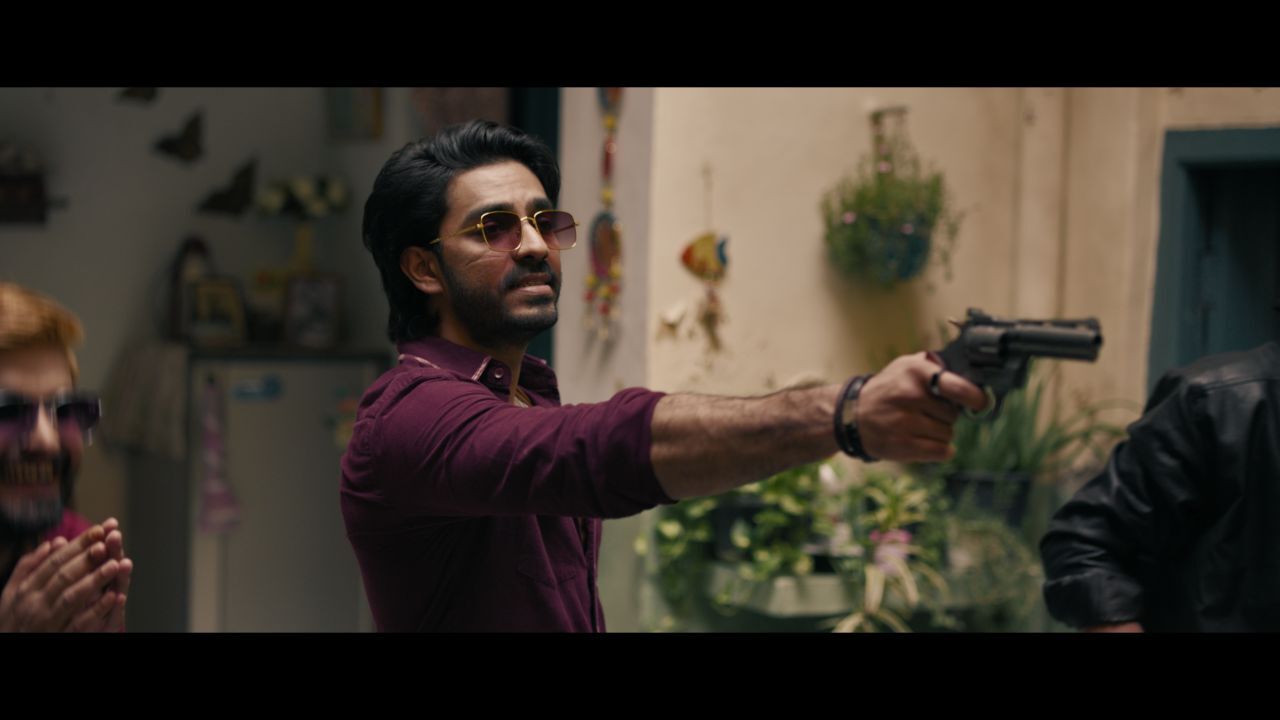
Q. Looking back, where does Nishaanchi sit in your journey as a storyteller — from Black Friday to Gangs of Wasseypur to now?
Nishaanchi is definitely my ode to Classic Indian Cinema that we grew up watching. It’s the cinema that inspired me to get into films. For the younger generation, it's the kind of movie that they’ve heard about but not experienced. This film is my interpretation of the Indian classics that we’ve lived and loved!
Q. And finally, if you had to describe Nishaanchi in just three words to someone who knows nothing about it, what would they be?
Raw, Rustic & Masala Entertainer


